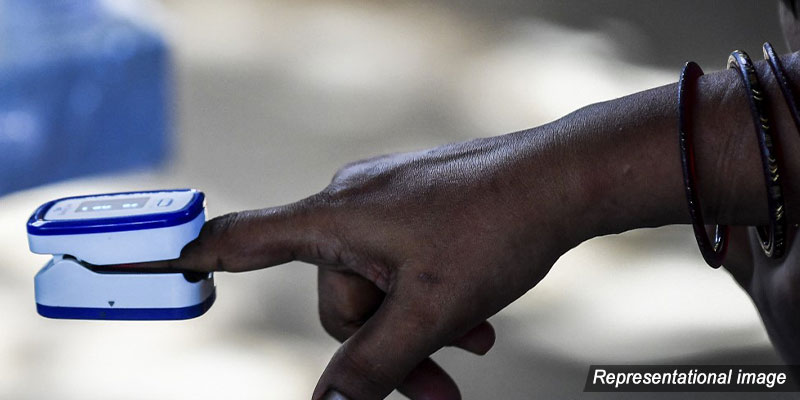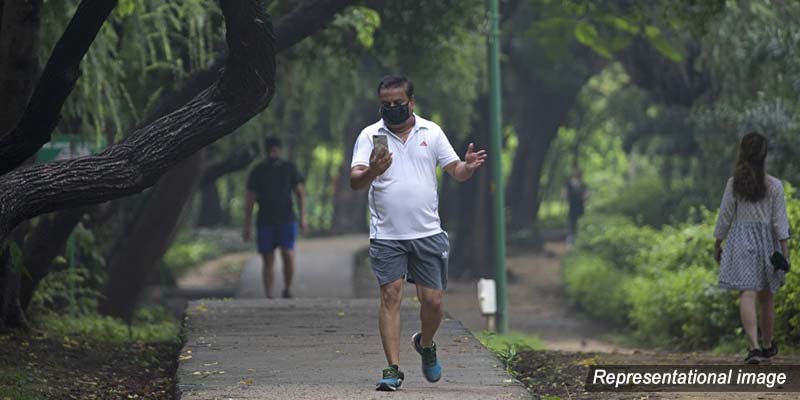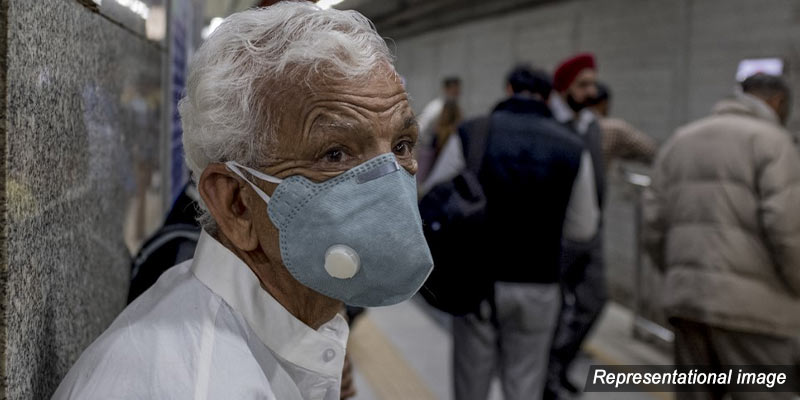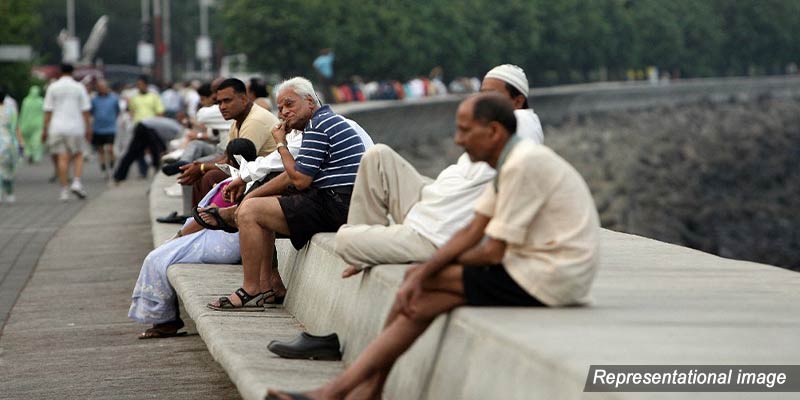- India
- Feb 20
The growth of ‘silver economy’ in India
• By 2050, one in every five Indians will be a senior citizen. In absolute numbers, it will be equal to the population of the USA for the industry in the form of a “silver economy”.
• In India, senior citizens — people aged 60 years and above — currently comprise a little over 10 per cent of the population, translating to about 104 million.
• By 2050, the elderly population is projected to rise to 319 million (19.5 per cent of the total population).
• The economic activities, goods, and services that cater to the elderly people make up the “silver economy”.
• India’s silver economy is estimated to be worth approximately Rs 73,082 crore at present and is expected to grow multi-fold in the coming years.
• With the rise in the ageing of the population, senior citizens are emerging as an influential consumer segment. Studies have put senior citizens, along with professionals in the 45 to 64 age group, as the ‘wealthiest age cohort’ in the world.
• Further, research shows that healthcare constitutes about 31 per cent of the total expenditure of senior persons. Hence, there is a huge growth potential for health and wellness-driven businesses within the senior care segment in India.
• Overall, the silver economy presents significant opportunities for businesses and organisations that cater to the needs and wants of the elderly population.
• The market size is expected to grow rapidly in both India and the world, and there is significant potential for innovation and growth in this sector.
Drivers of growth
1) Home Care Services
• More than 75 per cent of the elderly people in India suffer from chronic diseases and these figures indicate the potential of the home-based care market in India. The size of the home healthcare market in India was estimated at $6.2 billion (Rs 50,840 crore) in 2020 and it is projected to reach $21.3 billion (Rs 1.74 lakh crore) by 2027.
• The home healthcare market can lead to a 15–30 per cent reduction in infrastructure and operational costs compared to hospital costs for the same treatment.
• Further, the COVID-19 pandemic has provided an opportunity for policymakers to explore the home-based care market in India. The hospital capacity was limited during the pandemic, which forced chronic patients to seek home-based healthcare and it may continue to be the best alternative for such people due to its flexibility and convenience.
2) Health Technology
• In 2020, the Indian health-tech market was worth $1.9 billion (Rs 15,580 crore). Further, the Indian digital healthcare market is projected to grow at a CAGR of 27.41 per cent, reaching Rs 48,543 crore by 2024 from Rs 11,661 crore in 2019.
• Because of COVID-19, certain product categories have seen a massive demand like telehealth applications, remote patient monitoring, Internet-of-Things (IoT) products, AI-based smart housing, and home equipment, assistive technology products, which have a huge potential to transform the lives of seniors.
• The use of wearable devices for the elderly is expected to continue to grow, driven by the increasing demand for remote monitoring and the need for more personalised healthcare solutions. There are several wearable devices available in the market that cater specifically to the needs of the elderly population, including smartwatches and fitness trackers with health monitoring features such as heart rate monitoring, blood pressure monitoring, and sleep tracking.
• There are also specialised devices such as fall detection sensors, GPS trackers, and emergency response systems that can alert caregivers or emergency services in case of a fall or other medical emergency.
• According to a report, the global market for wearable medical devices is expected to reach $87.77 billion by 2027, with a compound annual growth rate (CAGR) of 27.9 per cent from 2020 to 2027. This growth is being driven by the increasing adoption of wearable devices by the elderly population, as well as advancements in technology and the rise in chronic diseases.
• The telemedicine market in India has the highest growth potential and is anticipated to reach $5.4 billion (Rs 44, 280 crore) by 2025, growing at a 31 per cent CAGR. Further, the telemedicine market is likely to develop into a full-fledged “virtual care ecosystem”, including teleconsulting, e-pharmacy, telepathology, and teleradiology, which has the potential to bring healthcare to fingertips.
3) Health Insurance
• With only 18 per cent of people over 60 years covered with health insurance, the elderly health insurance industry continues to remain an untapped market which presents lots of opportunities for investors to enter the market. Although several insurance companies offer specialised health insurance plans for senior citizens, a comprehensive and integrated insurance product for seniors, which includes OPD care, diagnostic care, preventive care, etc, is still absent.
• Therefore, the geriatric health insurance sector has the potential to develop as a separate insurance segment.
4) Ayush-based Services
• The Ayush market has received a boost from the widespread acceptance of ayurveda and other traditional medical practices for their healing potential. The growth potential of the Ayush market was highlighted during the COVID-19 pandemic in India, where people increasingly turned towards Ayush-based practices due to its holistic approach to health and overall well-being.
• Additionally, an increase in the demand from the elderly population for preventive medications with almost no side effects or very few side effects is likely to fuel the Ayush market.
Govt initiatives to boost silver economy
The government is exploring various ways to promote the idea of a silver economy.
Some of them are:
• In December 2020, the government released a draft National Policy for Senior Citizens, which included various enabling provisions like integrated insurance products and savings schemes, comprehensive insurance and pension systems, senior-friendly tax structures, subsidised financing products, etc, to provide policy support for the silver economy.
• The government launched the Senior Able Citizens for Re-Employment in Dignity or the SACRED portal to connect senior citizens with job providers in the private sector.
• Based on the recommendations of a expert group on silver economy, the Senior Ageing Growth Engine (SAGE) initiative has been launched by the ministry of social justice and empowerment government to promote and incentivise senior care products and services. The SAGE portal provides a ‘one-stop access’ to senior care products and services by identifying, aggregating, and delivering them directly to the stakeholders.
• Further, an initial budget of Rs 100 crore has been set aside by the ministry of social justice and empowerment for promoting the silver economy in India, of which approximately Rs 25 crore had been assigned for use in FY 2021-22.
Way ahead
• Embracing transformative digital disruptions in this field can play an important role in improving the accessibility, affordability, efficiency, and quality of services, and creating more sustainable models of care.
• To overcome the challenges of a shortage of skilled workforce, strategic adoption of technology needs to be brought in by the government.
The impact that these digital disruptions could bring will boost the efficiency of the service to the elderly by:
i) Increasing the reach of services, even in the remotest areas.
ii) Reducing care worker visits to elderly homes.
iii) Improving the health status of the elderly.
iv) Digitally enabled elder living facilities & healthcare facilities.
v) Intelligent and easy to use assistive devices improve mobility.
vi) Early responses leading to better health outcomes.
• Thus, the growth potential of the silver economy must be optimally utilised by employing the right strategies and interventions in the right sectors, to realise its true potential of serving over 300 million elders by 2050.
• The silver economy must place a greater emphasis on including seniors as active contributors in the economy rather than reducing them to just passive recipients. To achieve this, the country needs economic and social innovation that is supported by legislative reform and executive action.
• Mainstreaming ageing both from policymakers as well as by manufacturers, marketers, and industry will play a pivotal role in the coming years.
Manorama Yearbook app is now available on Google Play Store and iOS App Store




